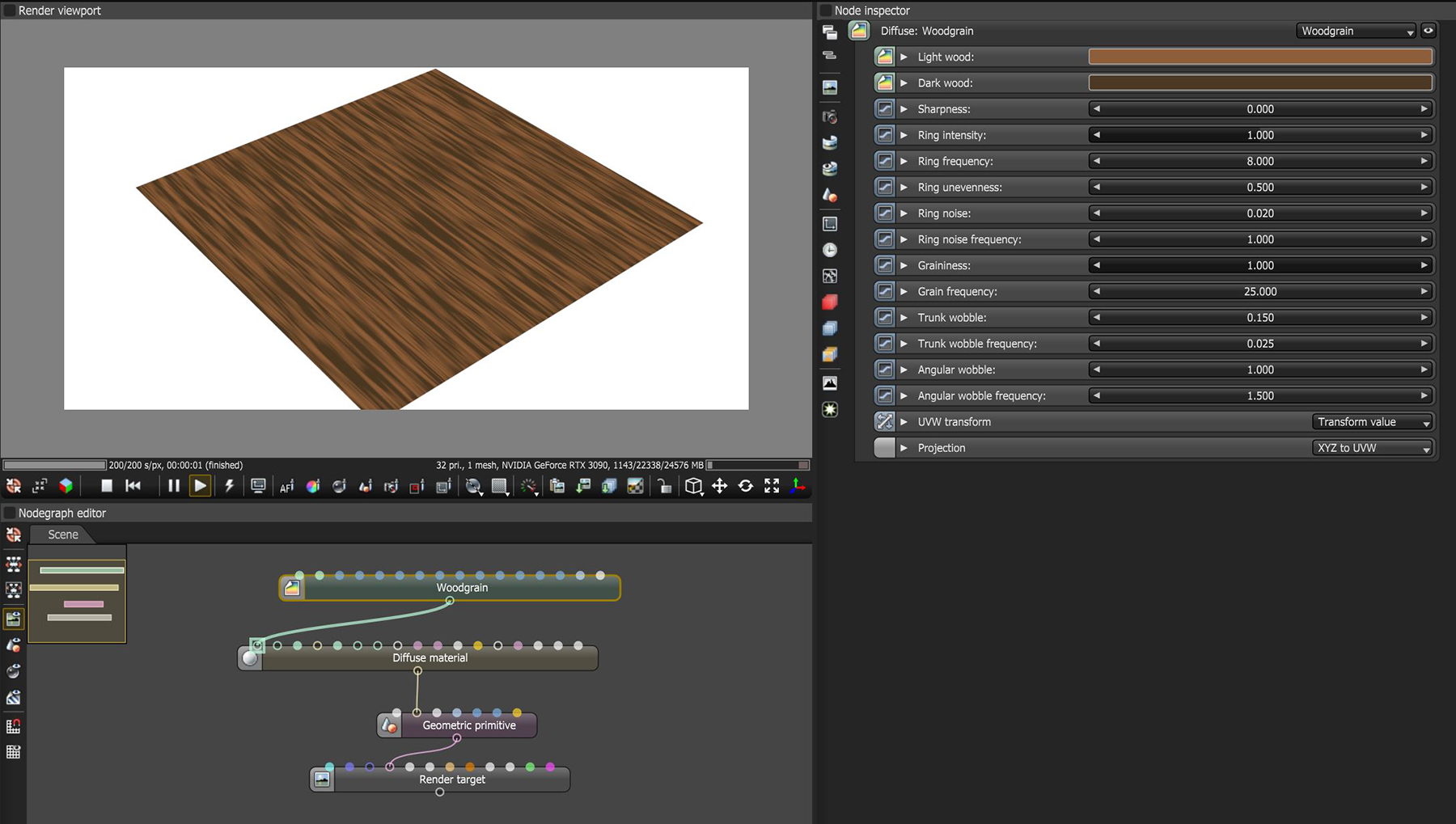
The Woodgrain procedural texture produces a wood grain type pattern (figure 1).

Figure 1: The Woodgrain texture applied to a Diffuse materialUsed for dull, non-reflecting materials or mesh emitters. on a plane primitive
Light Wood - The light wood color.
Dark Wood - The dark wood color.
Sharpness - The ring to grain ratio, larger values will smooth the grain lines.
Ring Intensity - Determines the intensity of the growth rings providing more contrast between growth rings with higher values.
Ring Frequency - Specifies the number of growth rings.
Ring Unevenness - Adds variation to the spacing of the growth rings.
Ring Noise - Determines the intensity of the ring noise by roughing the edges of each ring.
Ring Noise Frequency - Alters the waviness of the growth rings the father this value is from 0.
Graininess - Determines the intensity of the wood grain.
Grain Frequency - Specifies the number of grain lines.
Trunk Wobble - The intensity of the noise factor for both the grain and rings. Values farther from 0 will produce more circular results.
Trunk Wobble Frequency - Values farther from 0 will tend to scale or repeat the effect.
Angular Wobble - The intensity of the angular noise factor for both the rings and the grain.
Angular Wobble Frequency - The frequency of the angular wobble.
UVW Transform - Positions, scales, and rotates the surface texture.
Projection - Sets how the texture projects onto the surface.